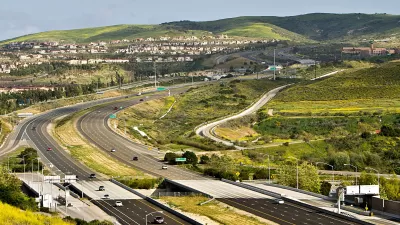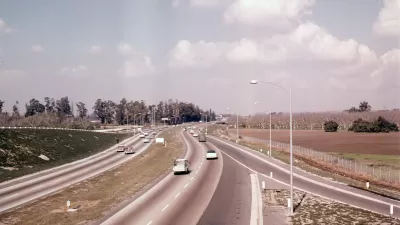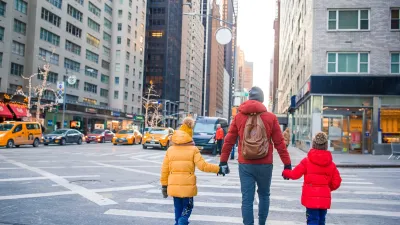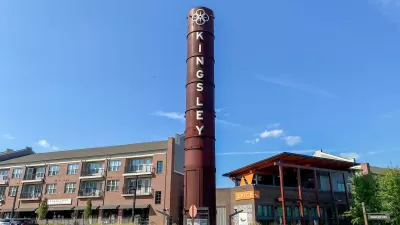Southern California's Orange County isn't exactly known for its walkability. Frank H. Wu decided to test that notion on a recent carless visit.

Frank H. Wu recounts his experience visiting Orange County on foot. His chosen mode is clearly unorthodox. From the article: "I see why people like to live there. It's comfortable, projecting the sense that there is no hardship in life. It's also designed around the car -- the built environment encourages everyone to drive from Point A to Point B."
Going carless in a region with such triumphant auto-oriented planning was a lonely experience for Wu. "On that first saunter down the street, I was the only person I saw walking. Over the course of about 2.5 miles, there was not a single soul on the sidewalk on my side of the street; I am not sure, since the street was several lanes wide, but I do not believe I spotted anyone else on the sidewalk on the other side of the street either."
Nevertheless, Wu survived without a car, and now extols the virtues of a pedestrian-friendly future in the area. "Nearby Los Angeles has been discovered as a walking city, championed by a new generation; Orange County cannot be far behind. The next time there, I will be prepared to go greater distances."
FULL STORY: Walking Orange County

Study: Maui’s Plan to Convert Vacation Rentals to Long-Term Housing Could Cause Nearly $1 Billion Economic Loss
The plan would reduce visitor accommodation by 25,% resulting in 1,900 jobs lost.

North Texas Transit Leaders Tout Benefits of TOD for Growing Region
At a summit focused on transit-oriented development, policymakers discussed how North Texas’ expanded light rail system can serve as a tool for economic growth.

Why Should We Subsidize Public Transportation?
Many public transit agencies face financial stress due to rising costs, declining fare revenue, and declining subsidies. Transit advocates must provide a strong business case for increasing public transit funding.

How to Make US Trains Faster
Changes to boarding platforms and a switch to electric trains could improve U.S. passenger rail service without the added cost of high-speed rail.

Columbia’s Revitalized ‘Loop’ Is a Hub for Local Entrepreneurs
A focus on small businesses is helping a commercial corridor in Columbia, Missouri thrive.

Invasive Insect Threatens Minnesota’s Ash Forests
The Emerald Ash Borer is a rapidly spreading invasive pest threatening Minnesota’s ash trees, and homeowners are encouraged to plant diverse replacement species, avoid moving ash firewood, and monitor for signs of infestation.
Urban Design for Planners 1: Software Tools
This six-course series explores essential urban design concepts using open source software and equips planners with the tools they need to participate fully in the urban design process.
Planning for Universal Design
Learn the tools for implementing Universal Design in planning regulations.
City of Santa Clarita
Ascent Environmental
Institute for Housing and Urban Development Studies (IHS)
City of Grandview
Harvard GSD Executive Education
Toledo-Lucas County Plan Commissions
Salt Lake City
NYU Wagner Graduate School of Public Service





























